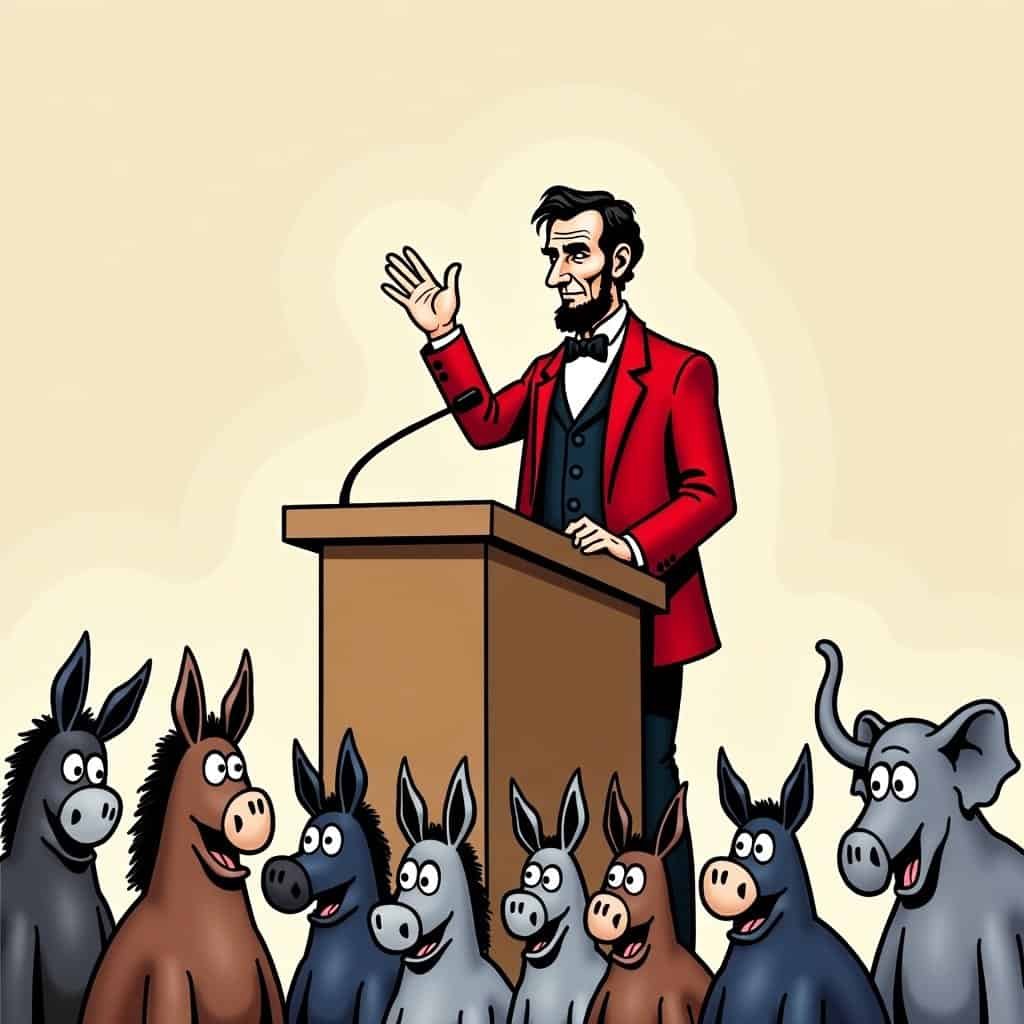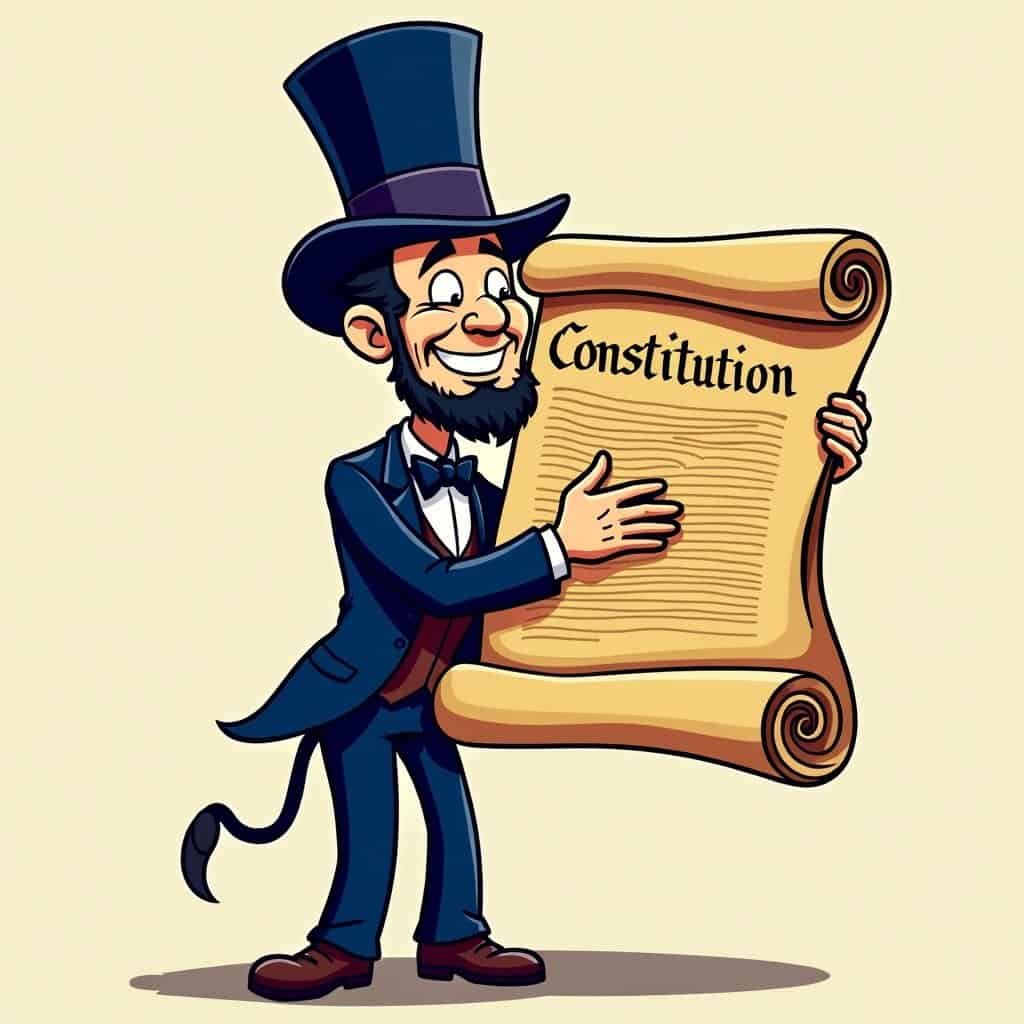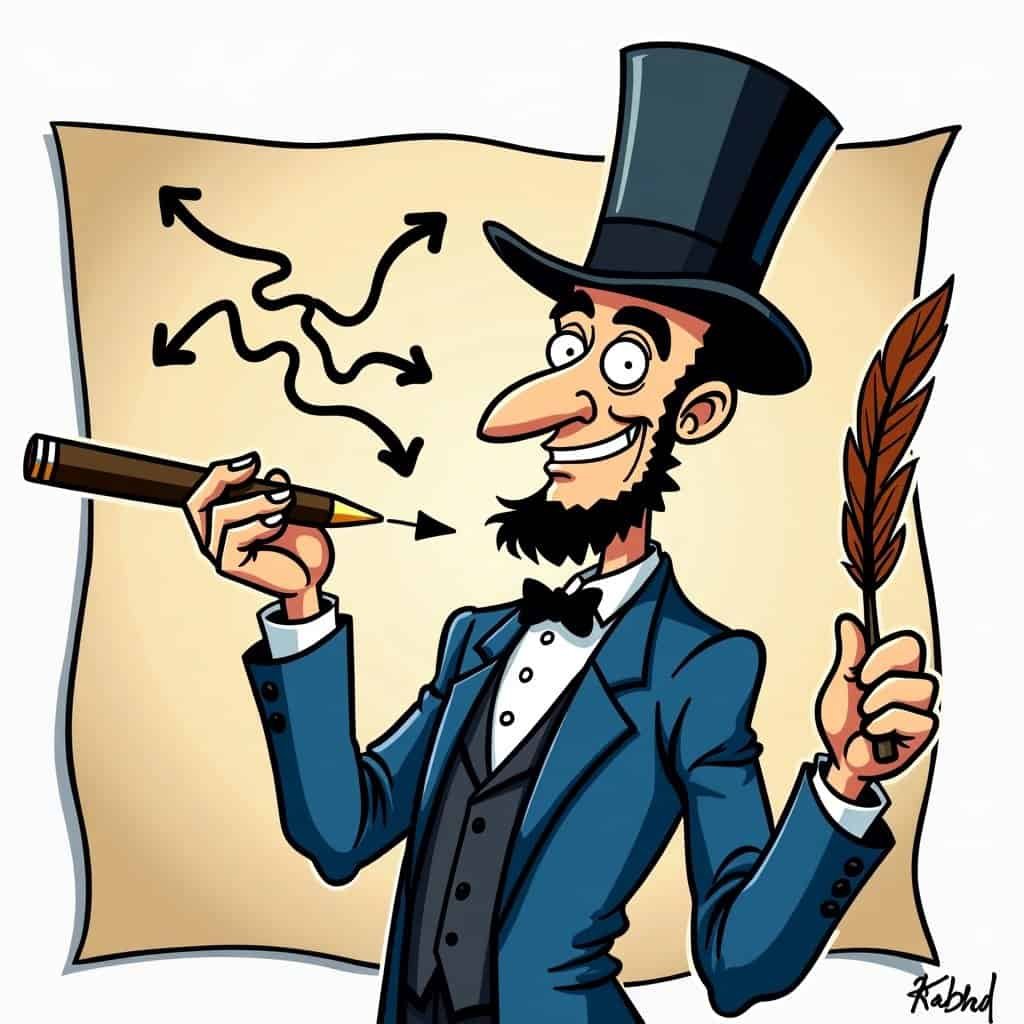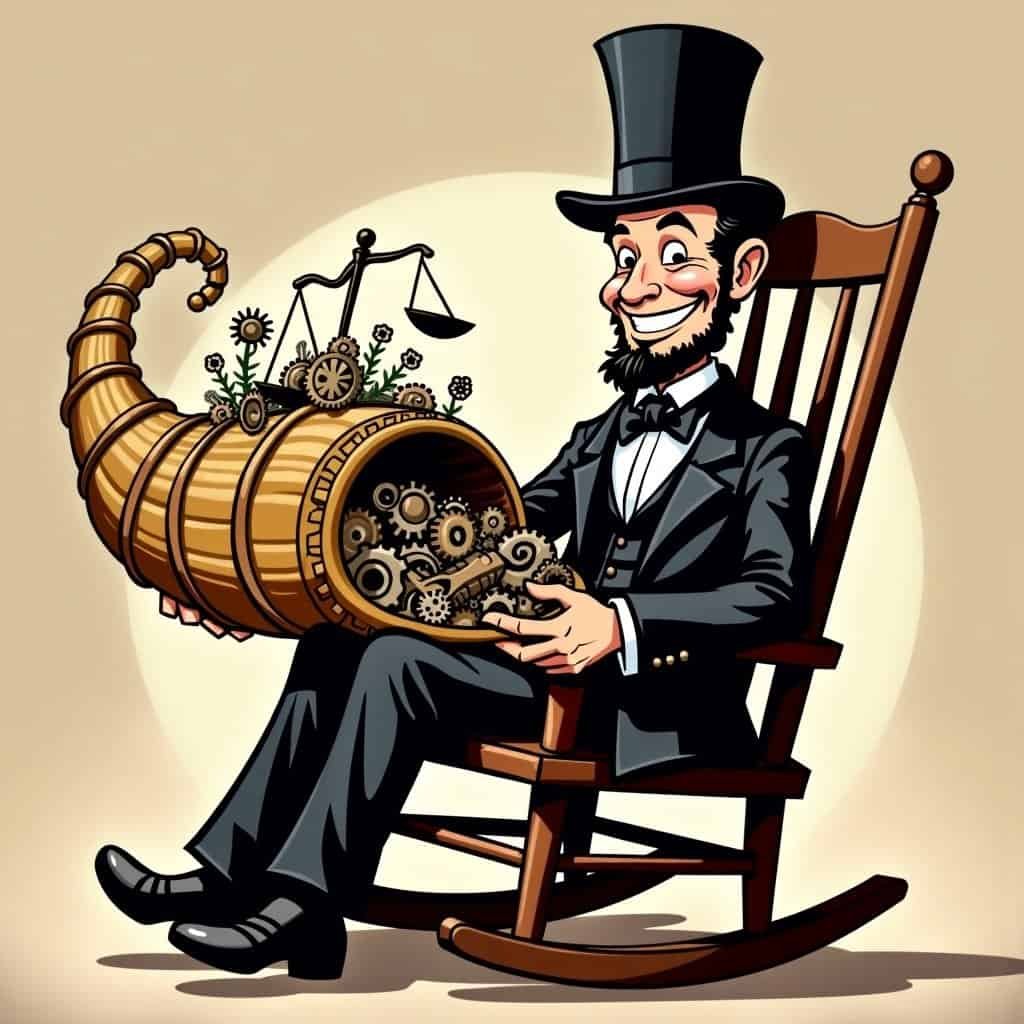Let’s journey back to Abraham Lincoln’s era, when honesty reigned supreme and stovepipe hats were the height of fashion. But forget about Lincoln’s famous beard for a moment – we’re here to chuckle about something as green as it is legendary: the birth of greenbacks.
Imagine this: it’s the 1860s, and our nation is knee-deep in a massive squabble over states’ rights and how to keep the country from falling apart. Enter the Civil War. Lincoln knew that if Uncle Sam couldn’t pay his bills, the Union might end up as flat as a flapjack. But Abe wasn’t your run-of-the-mill politician; he was more like a fiscal wizard who seemed to conjure greenbacks out of thin air.
Greenbacks were like play money with a purpose – a wartime brainchild to keep the economy from sinking. When Lincoln wasn’t chopping wood or fine-tuning Civil War strategies, he was making bold moves like introducing greenbacks to bankroll the Union’s fight. Some might say, “Isn’t that just a fancy way of printing money and calling it good?” Maybe so! But Lincoln’s clever thinking saved more than just pennies; it kept a nation intact.
The Impact of Greenbacks
Greenback Timeline
- 1861: Congress authorizes $50 million in Demand Notes
- 1862: Legal Tender Act passes, introducing United States Notes (Greenbacks)
- 1863: National Banking Act establishes a national currency
- 1865: Civil War ends, but Greenbacks remain in circulation
- 1879: Greenbacks become redeemable for gold
Now, why is this a conservative story worth raising a glass to? It’s about grit, managing money wisely, and finding creative solutions to economic problems with one of America’s most beloved leaders at the helm. Who knew green paper could pack such a wallop? By issuing greenbacks, Lincoln showed the kind of guts and determination that conservatives often praise – a strong belief that the end result justifies the means, especially when that result was keeping the Union together.
Relevance to Modern Policies
As we ponder how this relates to today’s policies, let’s take a page from Abe’s book. His approach to greenbacks came from necessity but mirrors those who argue for smart fixes to money troubles that don’t lean on heavy taxes or suffocating rules. By keeping government action sensible and limited, Lincoln’s currency legacy shows that a conservative approach can boost growth and spark new ideas without weighing down the economy.
Criticism and Lasting Impact
Lincoln’s greenbacks weren’t without their naysayers or challenges – it’s tough being both loved and knocked by history buffs (you know how picky they can be!). But the lesson stands: sometimes, it takes thinking outside the box – maybe even a bit of Lincoln-style magic – to steer America through money storms. And that, my friends, is something to cheer about!
Lessons for Conservatives
So what can those proud of their conservative values learn from this? Embrace creativity and quick thinking! Just ask yourself, what would Abe do?
Here’s to Lincoln, greenbacks, and the lasting spirit of clever leadership!
Table of Contents
- The Impact of Greenbacks
- Relevance to Modern Policies
- Criticism and Lasting Impact
- Lessons for Conservatives






